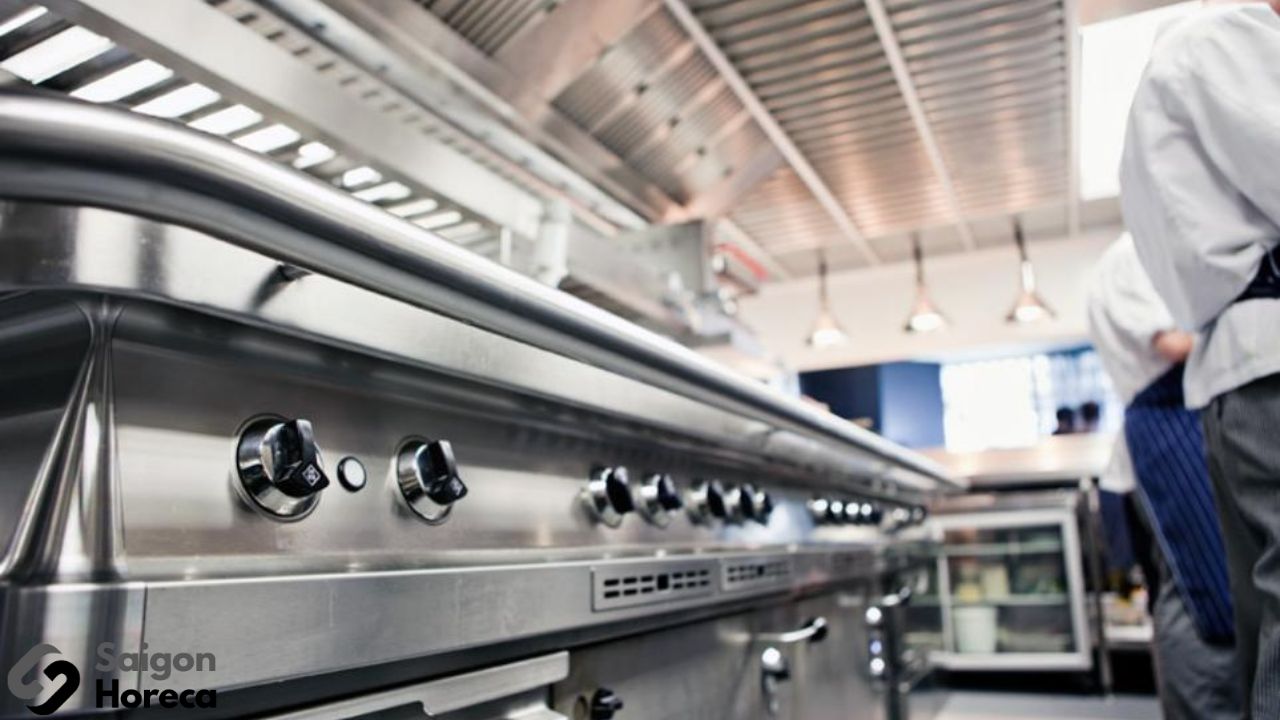Inox 304 is known for its remarkable characteristics such as resistance to discoloration, strong anti-oxidation, and corrosion resistance, along with […]
Read More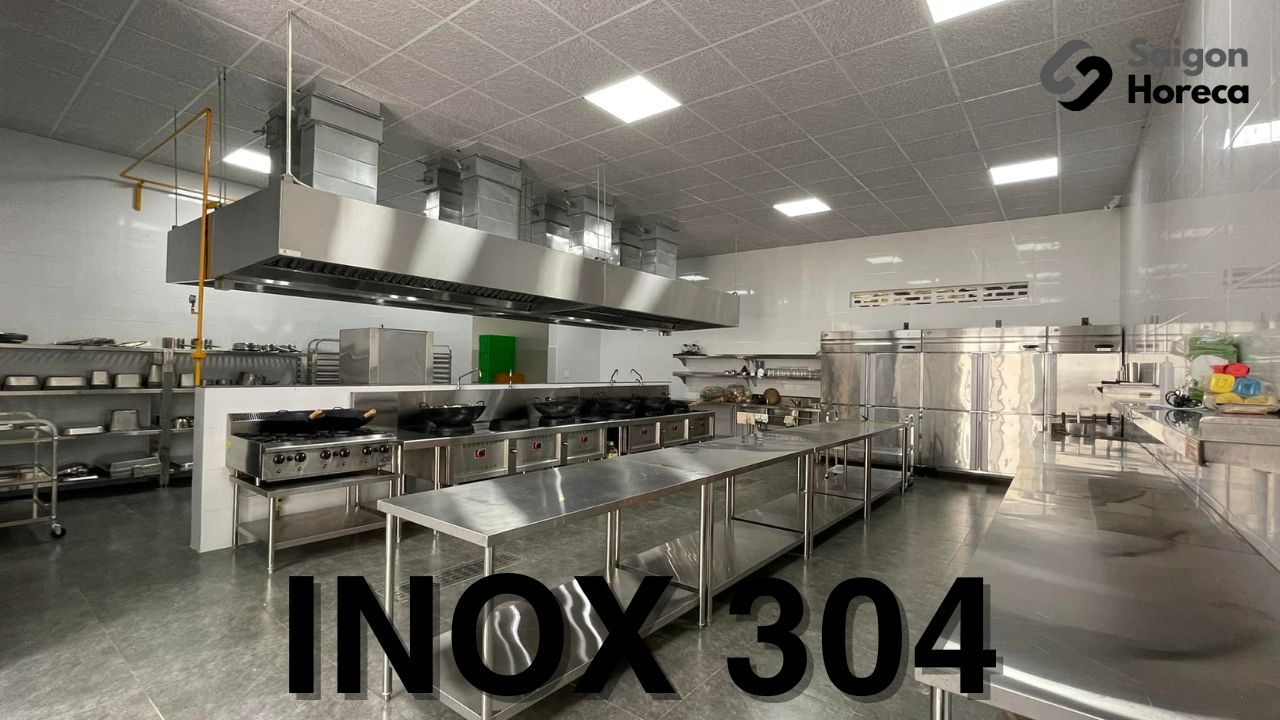

- Inox Kitchen Equipment
Inox 304 – Durability and Versatile Applications of Stainless Steel
- October 20, 2023
Inox 304 is known for its remarkable characteristics such as resistance to discoloration, strong anti-oxidation, and corrosion resistance, along with high durability. It is precisely due to these features that inox 304 is considered a top-tier and indispensable material in various manufacturing industries. In this article, let’s explore and discover different types of inox, with a special focus on inox 304, together with Saigon Horeca.
In this article
What is Inox 304?
Stainless steel, commonly referred to as inox or white steel, is a special type of steel that contains more than 11% chromium. This creates a self-protective layer that effectively resists corrosion. However, the key component is nickel, which brings stability to the Austenitic structure and excellent workability to stainless steel. The steel code 304, one of the most popular types globally, is a unique alloy comprising essential elements such as nickel, manganese, and chromium, with a minimum nickel content of 8%.


Common Ways to Distinguish Stainless Steel from Regular Steel
In the market, there are three common types of stainless steel, known as INOX: Inox 304 (also called 18/10, with a composition containing approximately 18-20% chromium and 10% nickel); similarly, Inox 201 (18/8); and Inox 430 (18/0).
Inox 304 stands out with its high shine, relatively clean surface, and excellent rust resistance. As a result, it often comes at a higher price compared to the other two types.
Inox 201 contains a lower proportion of nickel in its composition, while Inox 430 contains more iron along with various impurities. This leads to Inox 201 and 430 being more prone to rust, having lower durability, and not offering the same level of safety as Inox 304. Moreover, their cost is typically significantly lower than that of Inox 304.
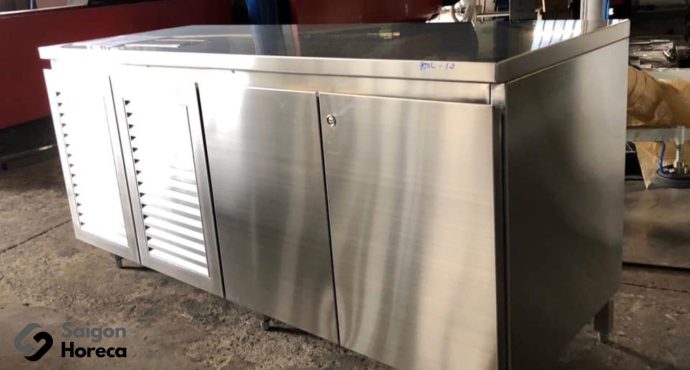

Let’s Explore the Distinctive Differences of Various Types of Stainless Steel with Saigon Horeca
Inox 201
Type 201 stainless steel exhibits significant resistance to corrosion in mildly to moderately corrosive environments, making it a reliable material under challenging conditions.
The heat resistance of inox 201 is also noteworthy, with the ability to withstand temperatures ranging from 1149°C to 1232°C. It can handle high-temperature situations without significant issues.
Additionally, inox 201 can be easily processed using basic welding techniques, often without major difficulties. This feature makes working with inox 201 convenient and flexible.
Despite its notable advantages, inox 201 also has some minor drawbacks, such as a slight susceptibility to magnetism. However, it remains an attractive option for various applications.
Inox 304
Inox 304 exhibits excellent corrosion resistance, especially in more challenging environments (although it is slightly lower than inox 316), even with exposure to chemical environments. This makes it a superior choice in harsh conditions.
Impressively, inox 304 has remarkable heat resistance, capable of withstanding temperatures up to 925°C. This allows it to work in high-temperature environments without difficulty.
Inox 304 is also known for its compatibility with all welding methods, making processing and fabrication more convenient.
Moreover, inox 304 is non-magnetic or only slightly magnetic, maintaining its stability and quality in various applications.
Inox 430
Inox 430 demonstrates significant corrosion resistance in organic acid and nitric acid environments. Additionally, it only exhibits minimal corrosion resistance in mildly corrosive environments, carefully controlled to withstand environmental impacts.
Inox 430 also has a heat resistance range from 815°C to 870°C, allowing its use in high-temperature applications.
However, for welding processes, inox 430 needs to be preheated to the appropriate temperature before welding can be carried out.
The suitable temperature range for using inox 430 ranges from 150°C to 200°C.
A notable feature of inox 430 is its high susceptibility to magnetism, which needs to be considered in specific applications.
Practical Applications of Stainless Steel
Inox 304, with its ease of fabrication and excellent corrosion resistance, finds numerous applications in the food industry. It is present in cocktail equipment, milk processing, and distillery equipment. Inox 304 is also widely used in piping systems, brewery equipment, fermentation tanks, and storage tanks…
Furthermore, inox 304 is utilized in household items like sinks, tables, coffee pots, refrigerators, stoves, and various kitchen appliances. Its ability to withstand corrosion from various chemicals commonly found in fruits, meats, and dairy products is a strength.
Other fields of application for inox 304 include architecture, chemical storage tanks, heat exchange systems, equipment in the mining industry, as well as in the production of nuts, bolts, and screws. SUS 304 is also commonly applied in water treatment and filtration systems, as well as in the dyeing industry.
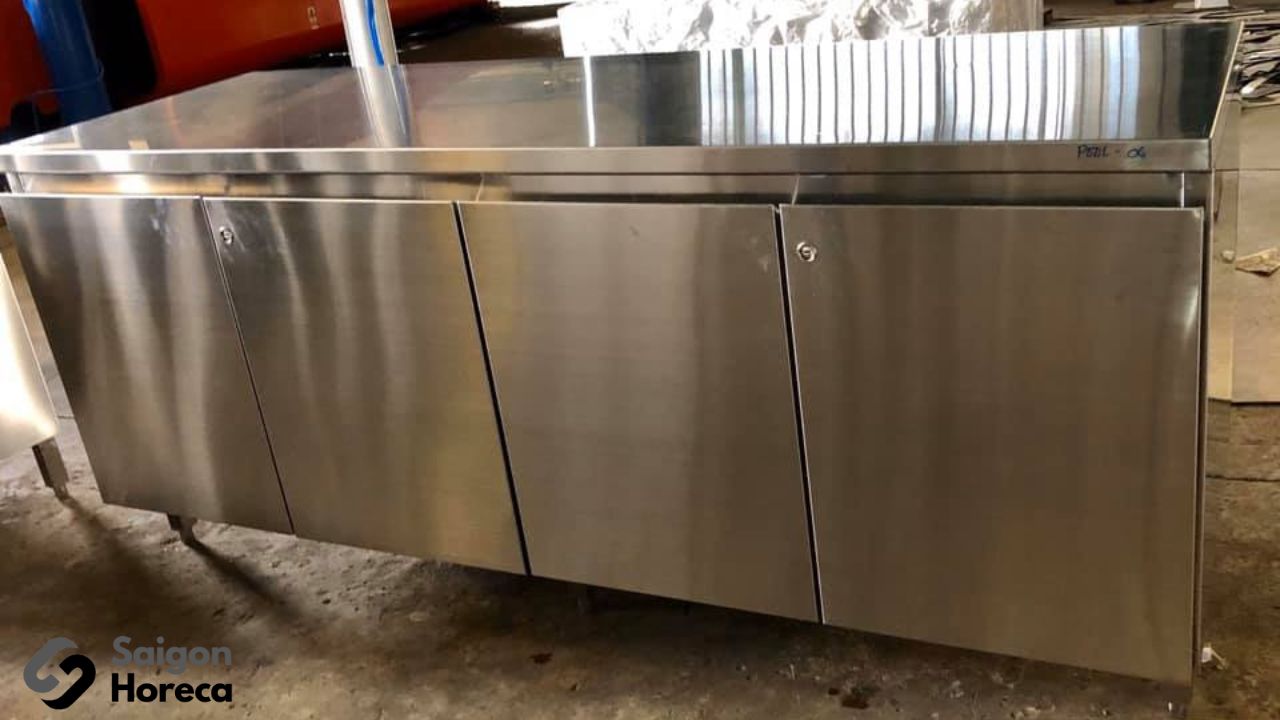

How to Identify Genuine Inox 304 Products
Although inox 304 may come with a higher price tag and is a target for counterfeit products on the market, there are ways to distinguish genuine inox 304 products. Below are some methods:
- Use a magnet: Inox 304 is typically non-magnetic or very weakly magnetic, whereas inox 430 is more strongly magnetic. By using a magnet, you can check the magnetic properties of the product to identify the material.
- Check product information: Always review the product information, including the product code and technical specifications. Inox 304 material is often clearly indicated in product information.
- Shop at reputable stores: Purchasing products from reputable and well-regarded stores in the industry reduces the risk of buying counterfeit goods.
- Check for work-hardening: If possible, test the product after the fabrication process under pressure and temperature conditions to induce work-hardening. Inox 304 has the ability to transform into Martensite under these conditions, causing work-hardening. Quality products typically do not exhibit this phenomenon.
- Research the manufacturer: Learn about the manufacturer and consider their reputation. Reputable companies often provide quality inox 304 products.
- Check for certifications: If possible, verify if the product carries quality, origin, and certification marks from authorized organizations.
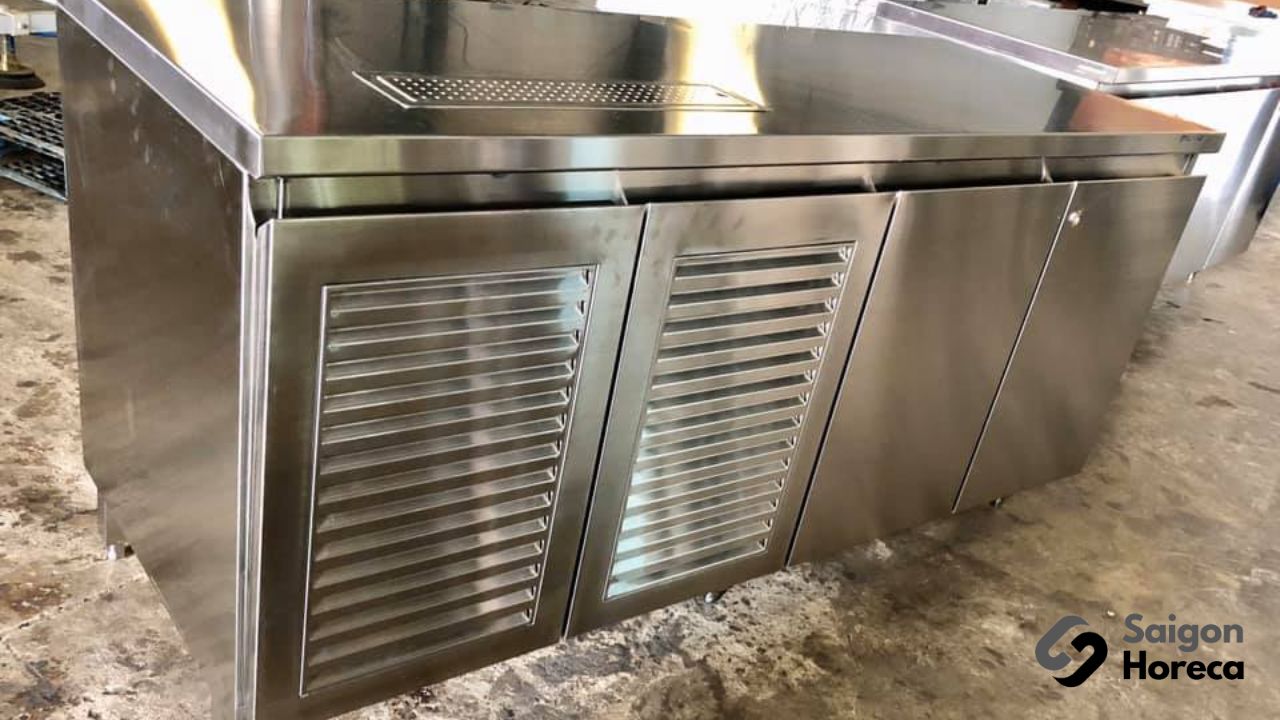

Where to Buy High-Quality Stainless Steel Products?
Remember that buying from reliable sources and being diligent in your inspections can help you avoid counterfeit or substandard products.
Saigon Horeca, a specialist in providing industrial stainless steel kitchen equipment, utilizes its expertise to ensure you have a great experience in obtaining inox 304 products.
In today’s market, ensuring the quality of inox 304 can sometimes be challenging. With the characteristic of being a professional inox group and a leading manufacturer, Saigon Horeca leverages its expertise to provide you with an excellent experience.
Monday - Friday
from 8h00 to 18h00
Số 40 Đường số 6, KDC Melosa Khang Điền, Phú Hữu, HCM.
Contact anytime
Commercial European Kitchens or European Kitchens in Restaurants are essential elements for preparing European cuisine in specialized European restaurants. While […]
Read More
